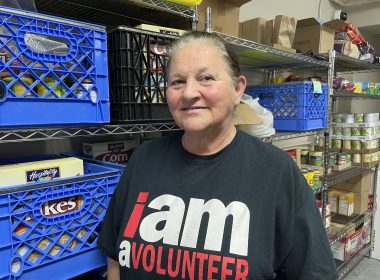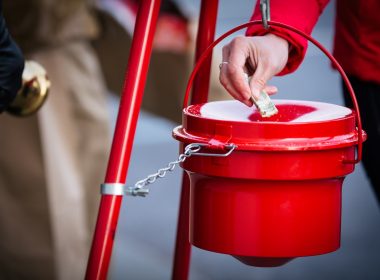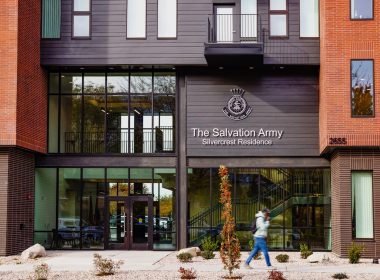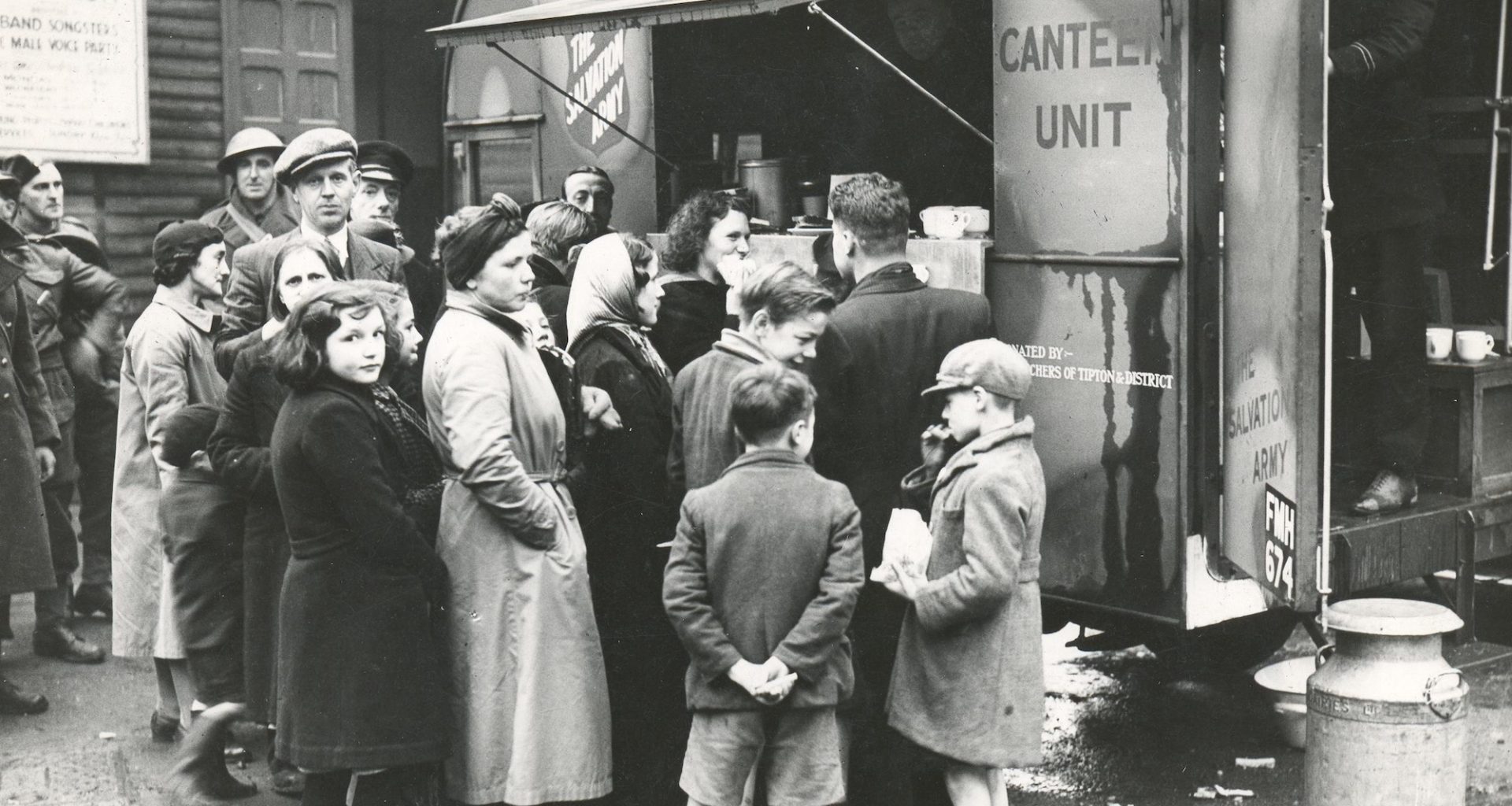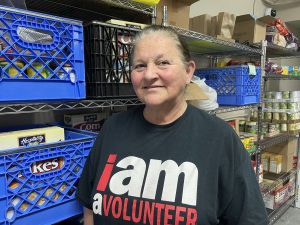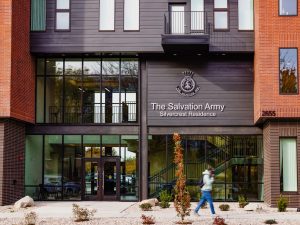The kettle. The thrift store. Another iconic symbol of Salvation Army service?
The canteen.
Throughout The Salvation Army’s history as an international nonprofit organization seeking to meet needs in Jesus’ name without discrimination, canteens have been dispatched as mobile feeding units during humanitarian events and disasters, including the Great Depression, World War II, September 11, Hurricane Katrina, the COVID-19 pandemic and more.
“Our canteens are as iconic as the red kettles out there in the community,” said Western Territorial Emergency/Disaster Services (EDS) Deputy Director Nicole Kanne. “If you see one of our Salvation Army disaster canteens, know that it’s filled with food and love.”
Typically when a canteen is dispatched in a disaster situation, Kanne said The Salvation Army has been requested by a state Voluntary Organizations Active in Disaster (VOAD) or other local authorities, and is working in concert with the government to locate survivors, provide meals and coordinate with other food service nonprofits.
“It’s a busy field out there, so we’re typically working with other agencies,” she said, adding The Salvation Army’s meal service canteens are largely paired with American Red Cross shelters, and are often found in church and school parking lots or dispatched to neighborhoods.
In a world where billion-dollar disasters are becoming the norm, a growing number of people impacted by disaster first engage with The Salvation Army at a canteen. So what is it? And how did it become iconic?
What is a Salvation Army canteen?
At its most basic level, a Salvation Army canteen is a food truck that transports hot and cold meals, drinks and snacks. “We might be the ‘OGs’ of food trucks,” Kanne said. “We have canteens everywhere—some are really old and loved, some are brand new.”
And by everywhere, Kanne estimates The Salvation Army has about 100 canteens spread across its locations in the western U.S alone. Most canteens have full kitchen cooking capabilities, while some are mobile food transportation units that are mobilized directly to neighborhoods to bring food to people where they are.
“A canteen meal might be a person’s first engagement with The Salvation Army,” Kanne said. “We want to fill families up with a hot meal and a warm heart. We want to leave a lasting impression on survivors while they’re experiencing major trauma and loss. We want to see you later today. We want to see you tomorrow. We want to see you every day until the disaster is stabilized, and then we can provide other short- and long-term resources, financial assistance or other recovery needs to families.”
What purpose does a canteen serve in a typical Salvation Army disaster response?
Many of The Salvation Army’s newer canteens display the message, “Hope is on the way.” One way to spark hope amid challenging days that harkens back to William Booth’s early motto “soup, soap and salvation”? Sharing a meal.
“We like to think of our canteens as kind of a central support point for survivors of a disaster,” Kanne said. “It will be in a central location where families, in the safety of our red shield, break bread with their neighbors and have officers pray over them…Sharing meals is a powerful way to strengthen relationships in the community and foster a sense of fellowship during difficult times. Food really is the core of who we are, sharing meals, preparing food with love for people, it’s really what we’re known for.”
Alongside The Salvation Army’s meal services, officers and trained volunteers deliver emotional and spiritual care—something The Salvation Army considers among its highest honors.
When The Salvation Army was deployed to Beaumont, Texas, following Hurricane Harvey in 2017, Kanne said many homes were washed out and cars were destroyed.
“We had canteens going directly out into neighborhoods, and we were the first people that they saw in days,” she said. “It was really heartbreaking. They thought they were forgotten, and nobody had made it to them yet, so it was great to have our teams go out there, provide them with some food, and then provide them emotional and spiritual care in their homes, because they had no way of leaving these neighborhoods.”
A symbol of hope and help
So much of the canteen’s beauty lies in its versatility. The mobile units allow The Salvation Army to easily adapt to evolving situations. Sometimes it’s not preparing three meals a day, Kanne said. Sometimes the need is just breakfast, or making sure a marginalized community who can’t make it to the central location is served by going to them.
“When we’re in the emergency operation centers and they say, ‘We have this senior folks home that no one’s reached out to, can you do it?’ We have the flexibility to say, ‘Yeah, we’re on it.’”
That flexibility can also be extended to situations outside of natural disasters, helping The Salvation Army meet a range of human needs.
A new kind of ice cream truck in Oregon
In Oregon and Southern Idaho, if you go to a community event, you might experience The Salvation Army’s canteen-turned-ice-cream truck. Cascade Divisional Commander Major Jonathan Harvey had seen a video featuring an ice cream truck outreach, and when he saw a decommissioned canteen at a Salvation Army service center parking lot, the idea crystalized. “We made plans to get the vehicle to Divisional Headquarters, prepared the vehicle for deployment in a new way and made it available to the field,” he said.
The retrofit was simple—having removed all the EDS decals, The Salvation Army designed a wrap for the exterior, removed a few pieces of equipment inside and replaced them with a freezer, with plans for a more extensive interior retrofit at a later date. The ice cream truck supports the division’s “elevate mission” focus and builds connections, Harvey said.

The division’s Salvation Army locations have the opportunity to use the ice cream truck. So far, the truck has made appearances at community and corps events. It’s more than just ice cream—when treats are dispersed from the truck, so is information about The Salvation Army and corps programs.
“We see the ice cream truck as a new street corner for evangelism. Just as Booth ministered on the streets of London in the founding days of The Salvation Army, we see this as a tool to attract families and individuals who may have never heard the gospel message,” Harvey said. “We can connect, engage in meaningful conversations and share a message of hope over a sweet treat.”
Taking chef-prepared meals to San Francisco’s Tenderloin
When a student from The Salvation Army Culinary Arts Training Academy in San Francisco noticed a canteen parked in the program’s central kitchen location, he asked Chef Timothy Tucker if they could use it.
The inquiry resulted in a weekly outreach through which Culinary Arts Training Academy participants serve some 500 meals a week in the Tenderloin, a neighborhood known for its challenges.
“We chose the Tenderloin because of the great need when we first started. We also went to some tent areas as well,” Tucker said. “Most of the time, students say they feel incredibly grateful and filled with joy. This is partially because some of my students have been in that situation and they are able to serve with great empathy and passion.”
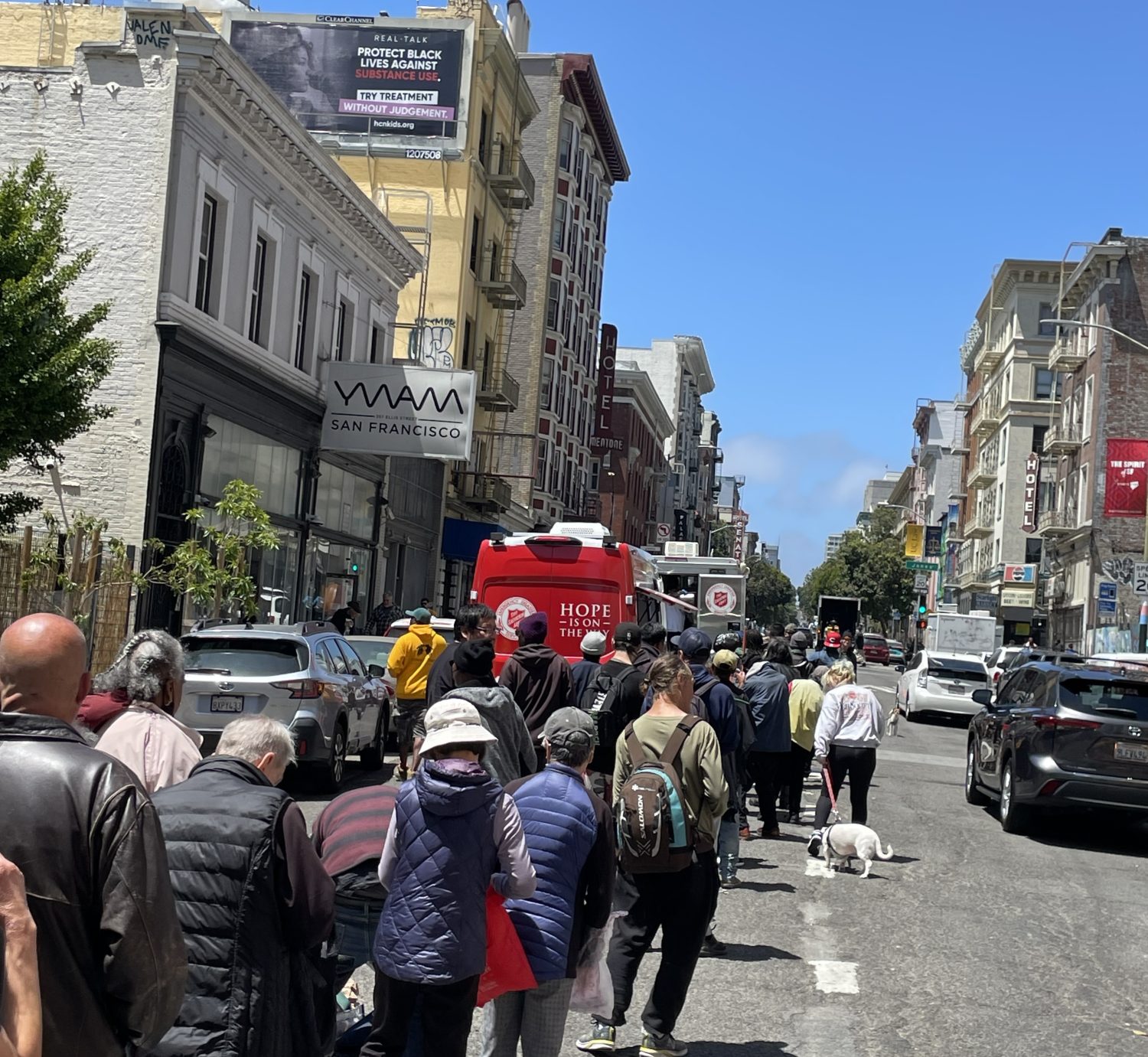
On May 23, Tucker, the culinary students and an EDS team from the Golden State Division, which serves the San Francisco Bay Area, ventured to the Tenderloin for the outreach, this time aided with a new EDS van donated by Lilly Endowment Inc. While the meals were served out of the canteen, the new van provided refreshing drinks to those in line.
“Operation Door Dash” in Tucson
During National Salvation Army Week, a team from The Salvation Army in Tucson hit the streets in a canteen for “Operation Door Dash.” Throughout the week the canteen made stops at local media outlets, delivering refreshments and Salvation Army bells—all to show appreciation and recognition of the media’s support in sharing The Salvation Army’s mission.
“The canteen truck gave Operation Door Dash a unique and memorable twist, turning a simple delivery into a full-on Salvation Army experience,” said Salvation Army Tucson PR Manager Kelli Beasley. “With the sweet treats, McDonald’s coffee, and the familiar ring of our bells, we brought joy to our media partners while reminding them, and their audiences, of the heart behind our mission all year long.”
Bringing warm meals to neighbors across Hawaii
In February 2024, The Salvation Army Hilo (Hawaii) Corps debuted the Mālama ‘Ohana Kitchen trailer, a 32-foot-long mobile kitchen designed to look like an aloha shirt that has the capacity to serve roughly 2,500 meals a day, primarily to the community and to those staying at the Overnight Safe Space, the corps’ on-site tent shelter.
Hilo Corps Officer and Hawaii County Coordinator Captain Sam LeMar said the trailer’s secondary purpose is to be mobilized throughout Hawaii for EDS responses. During the 2018 Kilauea Lava Flow, no such resource existed when The Salvation Army helped serve some 65,000 meals to impacted residents, and other kitchens needed to be utilized.
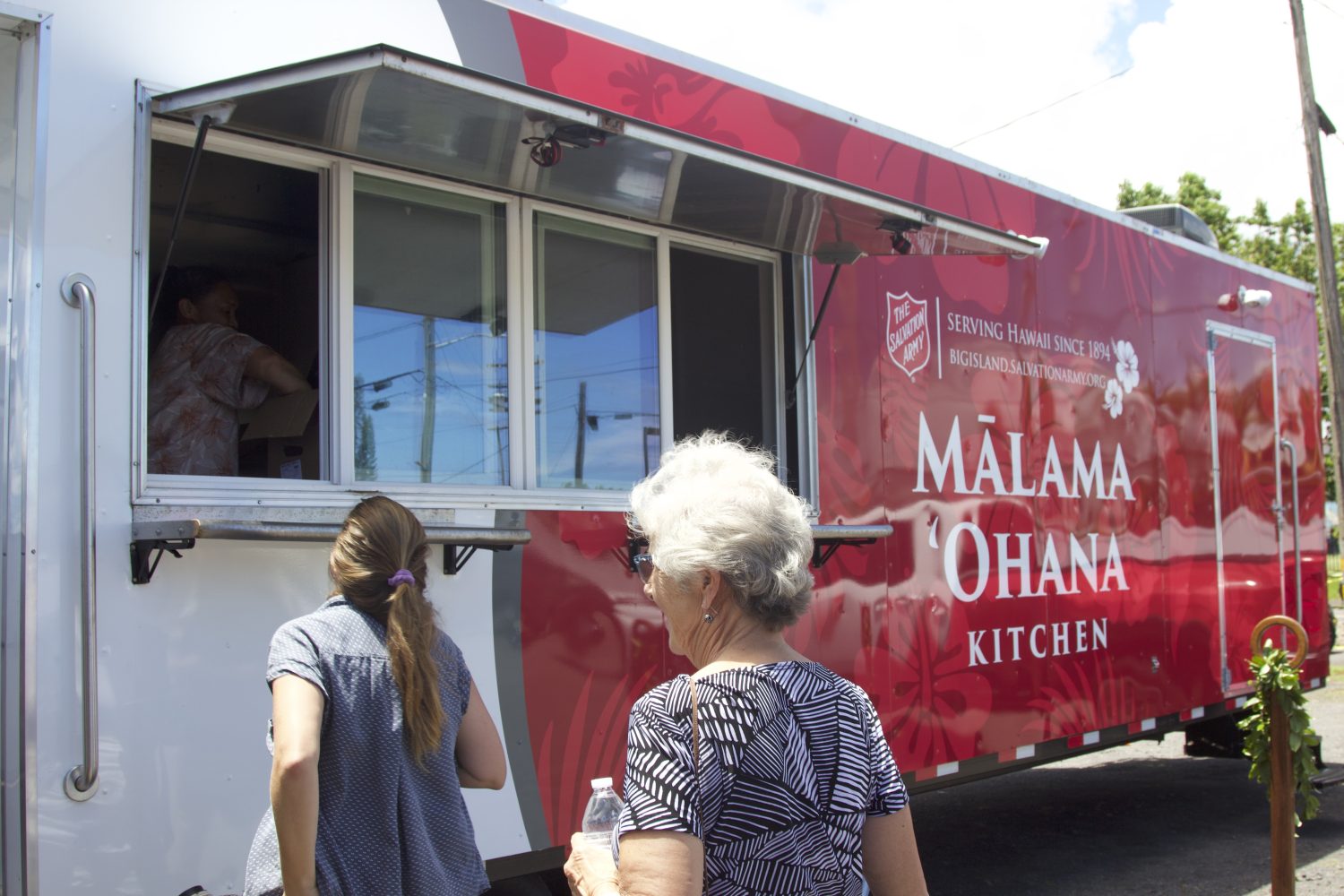
“The Malama ‘Ohana Kitchen is more than just a mobile kitchen; it symbolizes The Salvation Army’s ongoing commitment to serving the community,” he said in a press release. “This trailer is our way of reaching out to the people of Hawaii County in times of need, whether it’s by providing them with a warm meal or responding to emergencies.”
In the first eight months of the Overnight Safe Space, The Salvation Army served 5,096 meals with the support of the mobile kitchen.
A symbol of help in Anchorage’s Fur Rondy parade
Every year, the Fur Rondy festival celebrates the pioneering spirit of Alaskans with a series of events, including a parade. During the 2025 parade Feb. 22, Anchorage Corps Officer Major Raymond Erickson-King and Divisional Youth and Candidates Secretary Captain Brandon Kyle represented The Salvation Army by driving an EDS canteen along a loop through downtown Anchorage.
As the canteen traveled by the announcer’s station, event officials said, “The Salvation Army Alaska Division—they’ve been serving those in need in Anchorage and throughout our state for over 125 years. With the community’s support, they provide substance abuse treatment, counseling, family shelter, adult day care, senior meals and other critical services. They say ‘thank you’ for all of your support.”
Do Good:
- See how The Salvation Army fights disaster.

